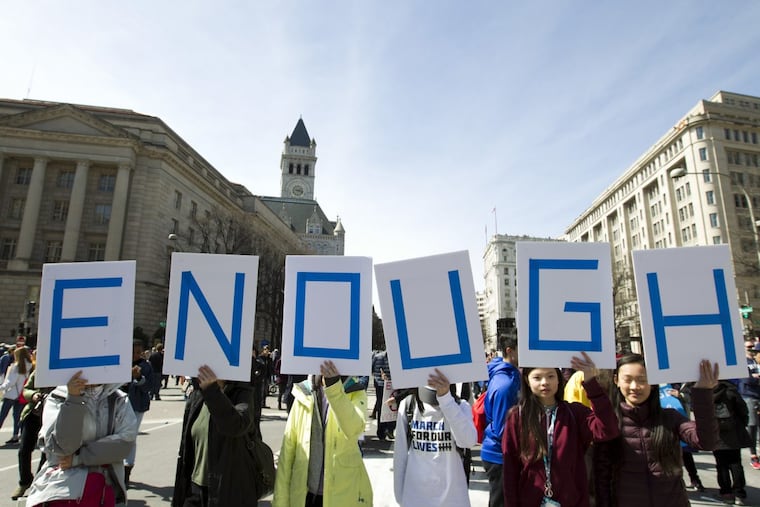Schools are safer than March for Our Lives supporters might lead you to believe | Opinion
Actions speak louder than words.

Despite what we heard from March for Our Lives demonstrators, most parents probably don't believe their children are in mortal danger at school.
How do we know? Because actions speak louder than words. To best spend our resources protecting our children, we must resolve this disconnect between what our mouths say scares us and what our actions reveal actually scares us.
Parents send their children to school in overwhelming numbers every day. By continuing to send their kids to school, parents reveal their belief that schools are at least safe enough that the added hassle of an alternative, like homeschooling, isn't worth the increased safety. Roughly 51 million children attend American schools. If their parents really believed serious harm would come to them, many would be demanding that they be allowed to keep their children home until schools can demonstrate they are safe.
Most parents know what no demonstrator would ever utter aloud: Children are actually safer in school than they are just about anywhere else, and that safety margin is rising year after year.
Deaths in school shootings have been steadily decreasing since 1993, when gun violence in the United States was near its all-time high. Outlying events like the Sandy Hook and Parkland shootings garner so much attention precisely because they are outlying events. They are horrific, but they are also extremely rare. School crime has declined steadily across all categories since the mid-1990s.
Worrying about school safety is understandable, but worrying about children's safety as they go to school is not unlike worrying over their safety as they get on an airplane. It is understandable, but it is disproportionate to the risks those children will face. Nothing is risk-free, but schools (and air travel) come pretty close.
While no one died in a crash on a commercial American airline in 2017, it is nonetheless true that the possibility of air traffic fatalities is not zero. That doesn't deter people from flying, however. Nearly 2.6 million people fly in and out of American airports every day, making the odds of dying in a single flight about one in 30 million. Conversely, the odds of a child dying in a school shooting on any given day in the U.S. are approximately 1 in 472 million.
In short, while both flying and going to school can result in death, neither is in any way likely to result in death, and it is high time we admitted as much. If parents are willing to risk putting their children on airplanes, then they should be about 15 times more willing to send them to school.
They demonstrate this willingness every day of the school year.
As a matter of fact, almost as many children die on school buses every year as die in school shootings. More than twice as many children die every year playing sports, and five times as many die bathing. No one would claim these deaths are acceptable, but some risks are simply so low as to be beyond the reach of reasonable legislation and regulation.
That there are no demonstrations over school buses, sports, or bathing indicates that people are well aware of the role risk plays in human life.
Risk can be mitigated, but never fully overcome. Conversely, there are any number of risky behaviors that could likely be addressed to far greater effect than the impulse to "do something" about school shootings. More than 2,700 teens died in 2015 while driving, many of whom were distracted by their cellphones, and many more of whom had been drinking. Parents intuitively understand that sending their children to school is less risky than giving them the keys to the family car, a cellphone, and access to alcohol.
If we care about reducing child and teen deaths, then we have to focus our resources where they will have the greatest effect. And the greatest effect is to be found alongside the greatest risk.
Last month, more than a million Americans demonstrated their concern for our children's lives by marching in support of safer schools. But if they really cared about saving children's lives, they would be marching to put an end to teenage driving and under-age drinking, too.
Antony Davies is associate professor of economics at Duquesne University in Pittsburgh. James R. Harrigan is CEO of FreedomTrust. They host the weekly podcast "Words & Numbers."